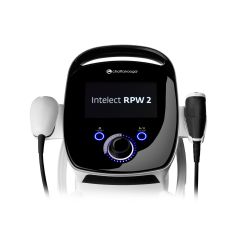Effect of Radial Extracorporeal Shock Wave Therapy on Pain Intensity, Functional Efficiency, and Postural Control Parameters in Patients with Chronic Low Back Pain: A Randomized Clinical Trial
Karolina Walewicz, Jakub Taradaj, Maciej Dobrzyński , Mirosław Sopel, Mateusz Kowal, Kuba Ptaszkowski and Robert Dymarek
Published in: Journal of Clinical Medicine, 2020 https://doi.org/10.3390/jcm9020568
This study was conducted to determine whether radial extracorporeal shockwave therapy (rESWT) can reduce pain and improve function in patients with chronic low back pain.
Forty patients with low back pain for at least 3 months were included in the study. Patients were randomized to receive either:
- rESWT + core stability exercises
- sham rESWT + core stability exercises
rESWT treatment was given twice a week for 5 weeks. Each session lasted for 7 minutes and rESWT parameters were set at 2.5 bar, 2000 pulses, 5 Hz. Patients in the sham group went through the same rESWT protocol as those in the active treatment group except the radial pressure waves were inhibited by a polyethylene cap on the handpiece.
The main outcome measures included the Laitinen Pain Scale (LPS), Roland-Morris Questionnaire (RMQ) to evaluate function, and the original Schober Test (OST) to assess range of motion. Measurements were taken at baseline, once treatment was completed, and at 1 and 3 months follow-up.
While both groups had some improvement in pain during treatment, the group that received rESWT had significantly lower pain scores at the 1 and 3 month follow-up compared to the sham group. The pain scores increased for the sham group during the follow-up period.
Both groups also showed an increase in function and range of motion during treatment. However, the group that received rESWT had significantly better function and range of motion at the 3 month follow-up compared to the sham group.
This paper concludes that incorporating rESWT into a conventional core stability exercise program can significantly improve the pain and function of patients with chronic low back pain. These improvements continued out to 3 months post-treatment indicating that rESWT can have long-term therapeutic effects.
Adding rESWT to the physical therapy protocol can significantly improve outcomes for patients with chronic low back pain and give them relief long-term.

